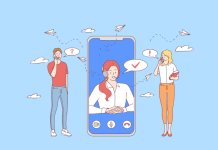
Delivering a consistent customer experience across channels requires integration and collaboration across functions. Our omnichannel series continues with a look at internal resources that can help you to successfully connect the touchpoints and engagement throughout the enterprise.
Be sure to check out the other posts in this series, which offer key insights from industry experts on the top challenges that contact centers face when transitioning their strategy from multichannel to omnichannel, the important first steps to take on your journey, how to prioritize customer channels, how to track the customer’s experience through multiple channels, which metrics will ensure that all channels are aligned with the omnichannel strategy, which elements of the contact center QA process will need to be reevaluated to monitor performance across channels, and how an omnichannel approach will impact your customer service staff’s role, skill sets and training.
In this post, our panelists offer their thoughts on what types of internal resources are needed to implement an omnichannel strategy.
ANNA CONVERY
Chief Marketing Officer & Executive Vice President of Strategy, OpenSpan:
Having the right players at the table for developing an omnichannel strategy is crucial. Such is also the case for the day-to-day operations. As with your more conventional channels, you must build a team that consists of business, IT, process and training leaders. All of these roles must be aligned and understand their business unit’s role in ensuring success across all channels. This means alignment vertically and horizontally, with a keen eye to managing the details and the many dependencies and interrelated impacts to the business.
MADELYN GENGELBACH
Vice President, Strategic Marketing, inContact:
Start where you are and conduct a stringent self-evaluation—and this goes back to some of my earlier answers; do you have the technology to do it and do you have (or can you find) the people to support it? Customers want omnichannel, they expect it, but if you offer it and then do it poorly, your customers will leave you as a result. How do you handle these expectations? I am passionate about this: Winning your customer’s loyalty, in the end, is all about blocking and tackling. It is not glamorous work and it can seem really intimidating, but it is really about taking it one step at a time.
It’s a technological crawl, walk, run.
When you are ready to add that next channel, don’t just add it for every agent. Take some time and discover how to handle it well and intertwine it into your operations. Understand how it impacts your business, including workforce management. Know where the tentacles reach and understand the possible impact.
To keeping up with the n+1, remember the garden analogy. When you add a garden you’ve got to be able to maintain it, to weed and feed. You have got to be able to understand the impact, get a good plan together and test it out, do a little bit and then work around it. This sets people up for best success.
LIZ OSBORN
Vice President, Product Marketing & Solutions, Five9:
Contact centers that are moving to an omnichannel strategy have to rethink their entire recruiting, hiring and training processes. When I was a contact center manager, back in the days before multichannel, I always interviewed candidates over the phone because I wanted to hear how they presented themselves on the phone. I would apply that same principle to text channels. Conduct a live chat interview with a job candidate to see how well they’re able to think on their feet, write and respond quickly, and how they answer social posts.
Training will also require a different approach. Seek out high-quality interactions that have the tone, consistency and quality of service that you want to represent in your text interactions for social posts and live chats. Use those to train staff on how to respond and to give them guidance. As we know, it’s much more difficult to get the right tone in text than it is with voice.
According to our recent survey, 48% of contact centers now have super agents or universal agents handling cross-channel interactions. And 75% of contact center leaders said that they were planning on expanding that and moving to a universal model—I think it’s inevitable. You may not have agents handling every channel. It may be a subset of channels. But we have customers that are using cross-channel interactions as an incentive for their top-performers. They find that agents are much more motivated and productive during the day if they can alternate among voice, email and chat, rather than just handling one channel constantly.
MARILYN SAULNIER
Director, Global Contact Center Consulting, Interactive Intelligence:
Highly skilled WFM resources are critical to the success of an omnichannel implementation. The challenge has always been to have the “right number of skilled agents in place at the right time.” Knowing precisely how many agents to staff for every half-hour of every day to answer inbound calls was challenging enough. That challenge morphs in complexity when supporting multiple channels with varying skills and service level objectives. HR, training and quality teams must be actively involved early in the process to identify skills, recruit and hire as needed, and develop training programs, templates, and a quality program to support all channels. Collaboration with IT on the rollout strategy is critical as the technology and contact center must be in lockstep.
To read the full Q&A panel with more insights on the omnichannel evolution and how it will impact your center, download the article here.




